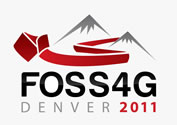Critical Analysis of the WFS Transactional
Session Type:
Academic Session
Presenter(s):
Jorge Rocha, Universidade do Minho
José Silva
While some standards have decisively contributed for more interoperable solutions, others need more time to mature and to become really useful. Only when several software providers offers compliant implementations, the standard become useful. Full interoperability is achieved when we can replace smoothly one functional module by another compliant with the same standard.
In this paper we discuss the usefulness of the Transaction component of the WFS. The WFS standard was published in 2002, version 1.0. In 2005, version 1.1 was published.
The Transaction operation is optional, so a WFS implementation does not need to support it to be conform.
According to OGC, the WFS was widely implemented (203), although the transactional part wasn't (55). Only 11 are official implementations of the WFS-T.
If users are not demanding its implementation, the developers tends to focus on more required features. So, we could use these numbers to infer that the transactional component is the less important part of this particular standard.
In this paper, more than showing that the WFS-T still didn't capture the users interest, we will try to explain the lack of usage of this standard.
Analyzing the two most typical GIS scenarios: the desktop scenario, where just one user is exploring GI, thus no concurrency exists and where the WFS-T will complicate more than simplify. In the multi-user scenario, the most demanding one, with clients and servers, the concurrency does exist, and transactional mechanisms are required. In this scenario, applications can rely on RDBMG transactional mechanisms. So, instead of connecting to WFS-T services, users and developers can connect directly to RDGMS supporting SQL+SFS. SQl and SFS are open standards widely used.
With these examples, it is shown that in both cases, the use of the WFS-T may be replaced, ensuring the achievement of the same goals. To illustrate the second scenario, we show two examples of clients (uDig and OpenLayers) connected to a WFS-T (Geoserver) and directly to the underlying RDGMS. We also present some benchmarks, regarding the performance with or without the WFS-T.
Finally, we conclude our paper stating that in practical terms, the WFS-T standard is less used, and so, the interoperability promise by its usage is compromised. The widespread and rich functionalities of geo-enabled RDBMS might be the major responsible for this. Nevertheless, the concepts behind the WFS-T, and the motivation behind its development are still important.
Speaker Bio:
Jorge Rocha is Auxiliary Professor at University of Minho.
Schedule info
Time slot:
Wed, 09/14/2011 - 2:00pm - 2:30pm
Room:
Spruce 










